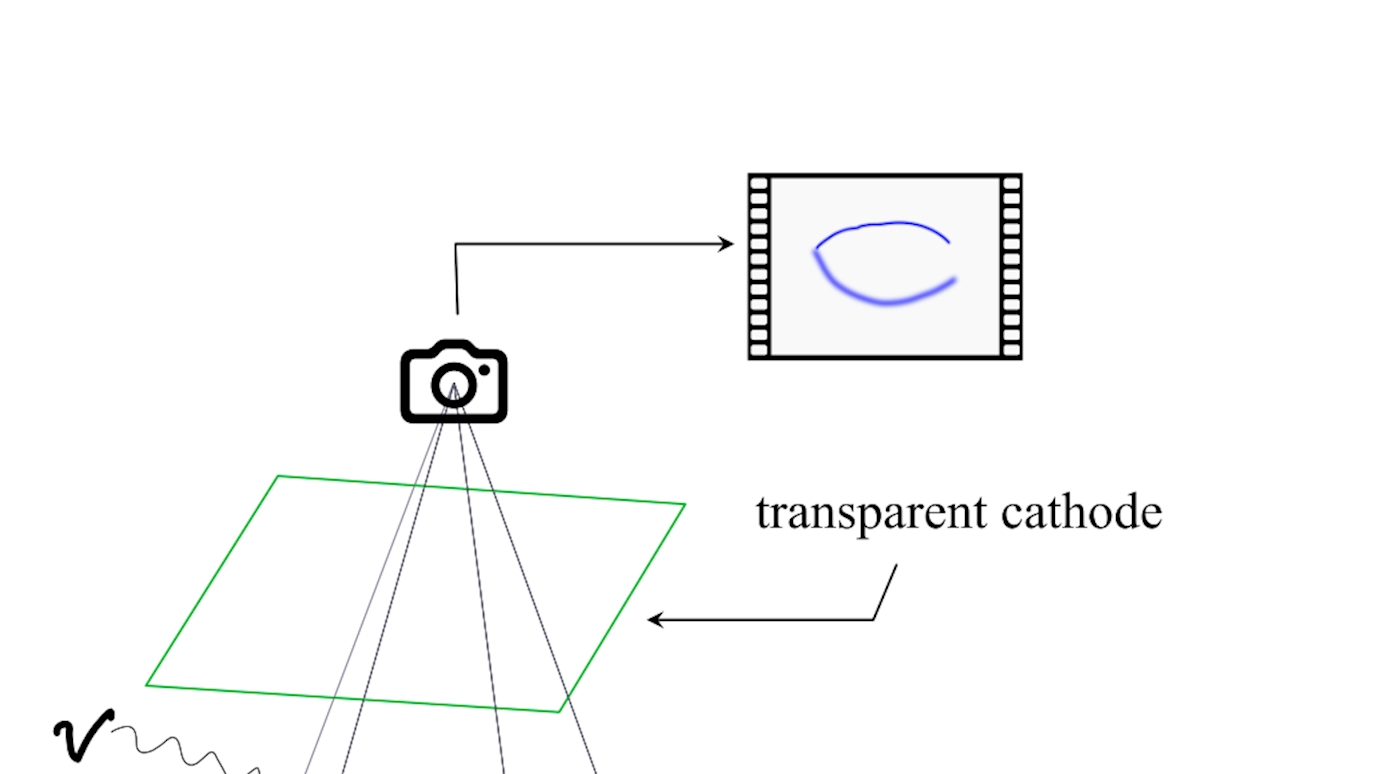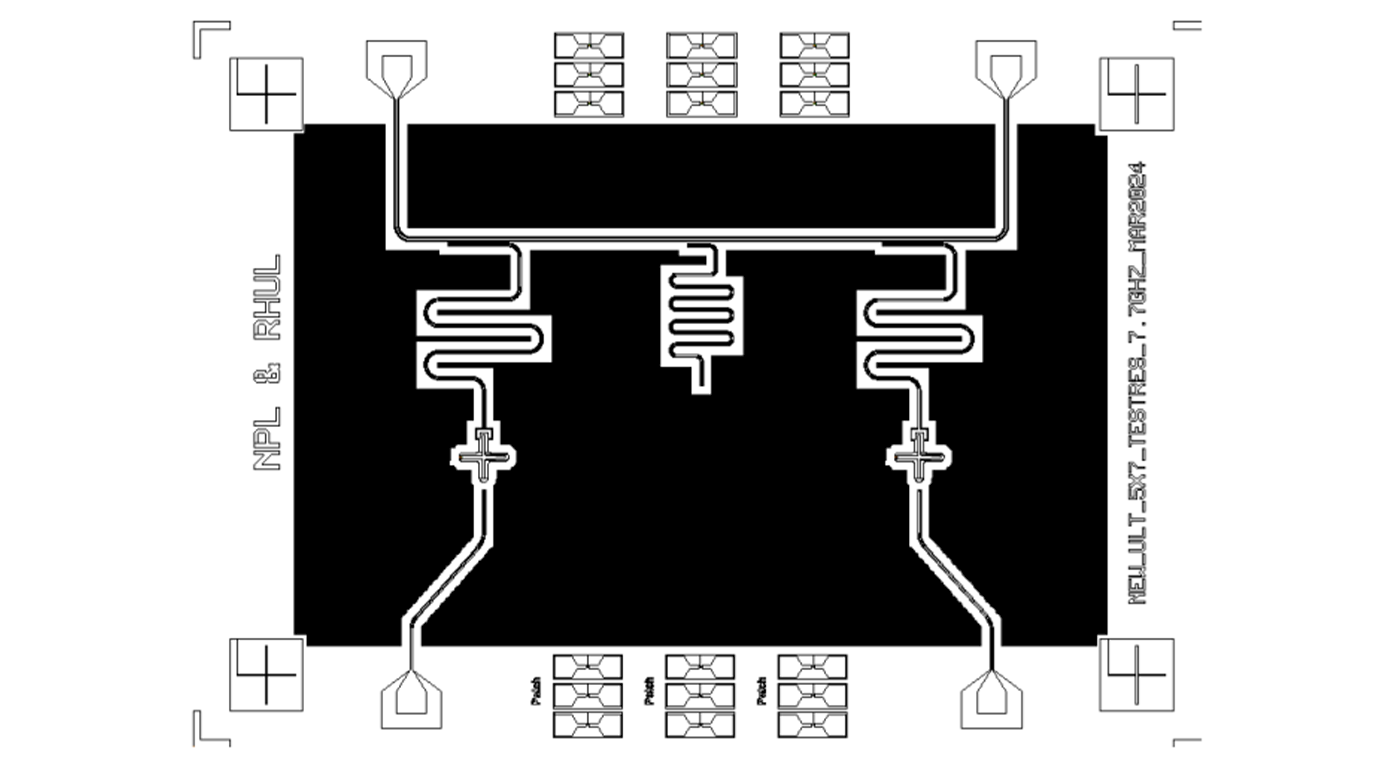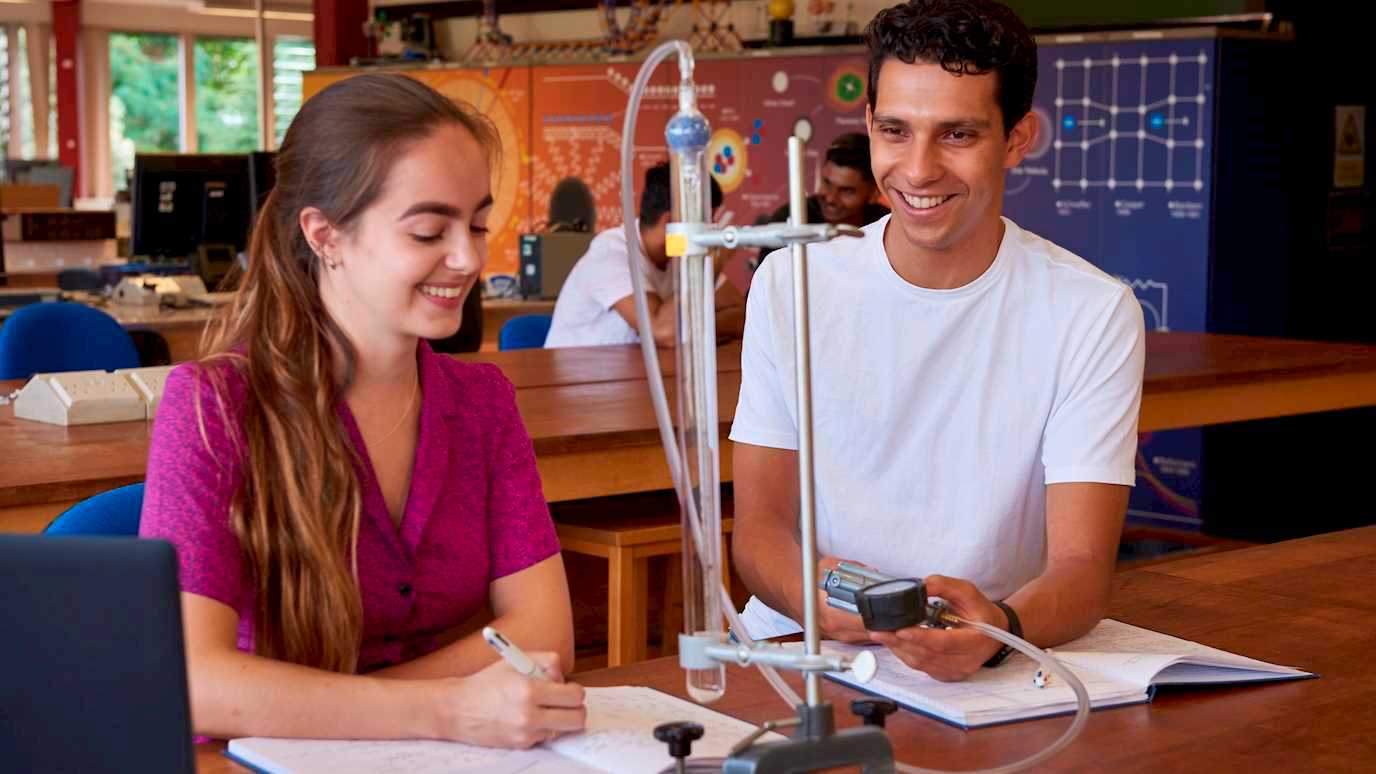Royal Holloway researcher Alexander Deisting, and researchers from the University of Warwick, Xianguo Lu and Garry Backer have been successful with a proposal for STFC Early Technology Development Capital Funding.

Sketch of a Time Projection Chamber. A camera at the top takes a picture through a transparent cathode. A nucleus is curving inside the device. The signal is amplified in the amplification region, under which lies the anode. The final image is of a curved line.
This STFC funding scheme aims to support the development of basic technologies that build upon STFC’s core capabilities and core programme, in areas such as sensors, imaging and detector development.
The £186k award will go towards building a test stand for high-pressure time projection chamber (TPC) technology. This hardware will play a critical role in advancing high-pressure TPC technology with optical readouts of charged particles for Royal Holloway's Dark Matter and Neutrino group. It will serve as a test stand to establish TPC performance with different gases.
The test stand will operate up to gas pressures of 10 bar and will have facilities to mount different TPCs inside. It will be equipped with a novel TimePix3 camera for the optical readout of particle tracks created inside the gas. Furthermore, the test stand will contain a laser system, which will allow the creation of calibration tracks inside the respective TPCs.
What is a TPC and how does it work?
A time projection chamber is a type of particle detector that uses a combination of electric fields and magnetic fields together with a sensitive volume of gas or liquid to reconstruct the trajectory of charged particles in three dimensions. Physicists have used it in particle physics and nuclear physics as well as in Dark Matter search detectors.
As opposed to the traditional approach to measuring momentums, where the electric and magnetic fields were oriented perpendicular to each other, TPCs are designed in such a way that a cathode and a segmented anode are placed at either end of the device, connecting to the readout system. The benefit of TPC is that it provides a 3D picture of collision within the detector, along with an improvement in the accuracy of electron tracking.
























